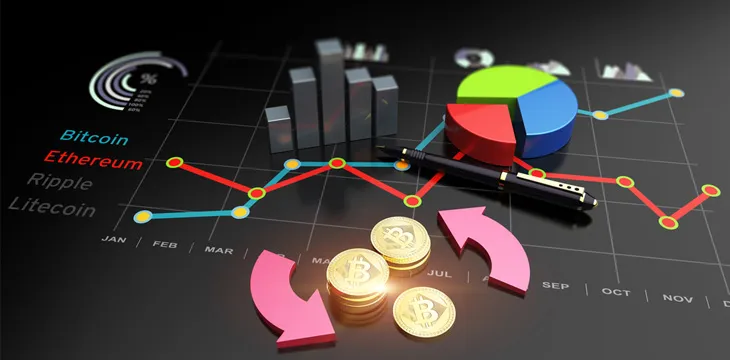|
Getting your Trinity Audio player ready...
|
An economic report delivered by the office of the United States President to Congress makes for difficult reading for digital asset advocates, dismissing the industry’s benefits and listing its risks to consumers, the environment, and the financial system.
The newest Economic Report of the President, produced to Congress on March 22, didn’t hold back in its critique of the false promises and risks associated with the digital asset industry while outlining policy moves toward a central bank digital currency (CBDC) and a federal digital payment system.
The annual report is produced by the Council of Economic Advisers for the President and presents the administration’s domestic and international economic policies, providing an overview of the nation’s economic progress.
This year’s 513-page report covered broad ground, from growth-enhancing policies and international partnerships to childcare and labor markets, but in a diversion from previous years, it also devoted significant time to the digital asset space.
2022 was a rough year for the digital asset industry, its image being dragged through the mud by high-profile collapses and scandals. Add to this the recent issues at tech banks such as Silvergate, Signature (NASDAQ: SBNY), and Silicon Valley Bank, which, depending on your particular inclination towards the industry, were either the result of bank runs brought on by consumers’ lack of faith post-FTX; or the result of a concerted government-led campaign to weaponize digital asset collapses and drown the industry in regulation, sparking consumer fears and bank-runs.
In light of this annus horribilis for the industry, it’s perhaps no surprise that the President’s Economic report spends an entire chapter (36 pages) outlining the supposed virtues of digital assets before essentially debunking all of them.
A damning overview
In its year-in-review section, the report set the tone for its discussion of digital assets to follow, stating: “Although advocates often claim that digital assets, particularly cryptoassets, are a revolutionary innovation, the design of these assets frequently reflects an ignorance of basic economic principles that have been learned in economics and finance over centuries, and this inadequate design is often detrimental to consumers and investors.”
Unfortunately for ‘crypto’ enthusiasts, the report never diverted too far from this withering assessment of the industry’s economic principles.’ It kicked off the chapter on digital assets by comparing them to the so-called ‘shadow banks’ of 1907—such as trust companies, which were state-chartered entities that competed with banks for deposits, and which are cited as a key causal factor in the financial crisis of that year.
“Fast forward 100 years and digital asset proponents are now aspiring to create a decentralized financial system without relying on governments and their regulatory frameworks, which were shaped by important lessons learned from multiple previous crises, including the 1907 panic,” said the report, which went on to explain how these various crises of the past two centuries were caused by institutions that function like banks but were not registered or regulated as banks.
The report suggested that with the digital asset collapses of 2022, advocates and investors in the industry are “relearning the lessons from previous financial crises the hard way.” It also put the current issues playing out in the sector down to the nature of the assets themselves, which it argued do not offer valuable investments, nor do they act as an effective alternative to fiat money, improve financial inclusion, or make payments more efficient.
Instead, the report stated “the innovation has been mostly about creating artificial scarcity in order to support cryptoassets’ prices — and many of them have no fundamental value.”
Dismissing the industry’s claims
In an in-depth and damning analysis, the report outlined certain industry “claims,” as it called them, which included that digital assets could: offer money-like functions without relying on a single authority; enable fast digital payments; be investment vehicles; increase financial inclusion; and improve the financial technology infrastructure of the United States.
The report suggested that digital assets have thus far “brought none of these benefits” and then proceeded to outline the “reality” of the situation, debunking and refuting them one after another.
On the claim of cryptoassets being an investment vehicle, the report described them as “mostly speculative” and pointed to when inflation increased globally in the second half of 2021 and into 2022, and the prices of cryptoassets collapsed, “proving them to be, at best, an ineffective inflation hedge.”
On the claim that digital assets could offer money-like functions without relying on a single authority, the report explained how ‘crypto’ coins/tokens generally do not perform all the functions of money as effectively as sovereign currency, such as being useful in exchange for good or backed by a trusted institution, and that the profits from the issuance of sovereign currency benefit taxpayers by lowering tax needs, a benefit non-federal digital assets also do not provide.
The list of critiques was extensive, but other key points included the heightened risk of bank runs associated with stablecoins; digital assets being potentially harmful due to a lack of consumer, investor, and market protections; and additional risks related to illicit finance, for example, ransomware and price volatility.
The report also spent three pages outlining the risks digital asset mining poses to the environment, echoing concerns voiced in a recent Senate hearing on March 7, which focused on the real-world negative impacts of mining operations on the environment, energy usage, and economy.
Overall, the economic assessment was that digital assets are “too risky at present to function as payment instruments or to expand financial inclusion,” and the report raised the question of “the role of regulation in protecting consumers, investors, and the rest of the financial system from panics, crashes, and fraud related to crypto assets,” hinting at a policy of increased backing for enforcers such as the Securities and Exchange Commission (SEC), which has been particularly active in the wake of the FTX scandal.
Despite painting such a harsh picture of the industry, the report did credit innovative digital asset technology with the potential to transform industries and business models and recognize the potential opportunities of the technology. With this in mind, it noted President Biden’s March Executive Order 14067, “Ensuring Responsible Development of Digital Assets,” which tasked the administration to study the effects of digital assets.
Future policy and plans
This wasn’t the only hint of reconciliation in the report, which ironically, considering the weight of negative evidence provided, rounded off its digital asset chapter by recommending investing in digital financial infrastructure “based on the growth of crypto assets and consumer enthusiasm for a faster and more inclusive financial system.”
Key areas for investment included a federal bank digital payment system, the FedNow Instant Payment System, which will be launched later this year and it’s hoped will increase the speed and ease of digital payments, and the introduction of CBDCs—in the form of a digital U.S. dollar—which would have the potential to offer significant benefits, the report stated.
Ending on a slightly more upbeat note, the report suggested these two innovations “could enable a payment system that is more efficient, provide a foundation for further technological innovation, facilitate faster cross-border transactions, and be environmentally sustainable.”
Watch: Domineum: Better Government & Enterprise Applications with BSV

 06-23-2025
06-23-2025 





